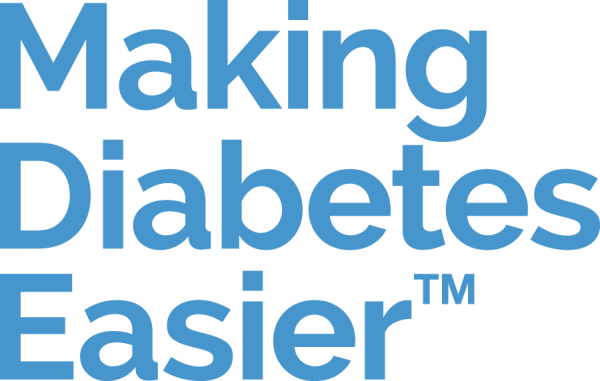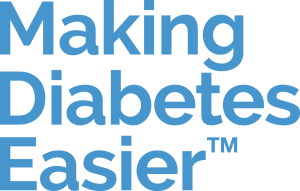10 Common diabetes myths and the facts behind them

10 Common diabetes myths and the facts behind them
There are a number of common misconceptions and myths about diabetes that are widely believed by the general population [1, 2].
These misconceptions and misrepresentations of diabetes can be harmful — leading to unfair stigma and prejudice around the condition, and standing in the way of appropriate diabetes care and management [1, 2, 3].
Understanding more about diabetes and seeking out accurate information is important when it comes to managing the condition [2]. In this article, we debunk 10 common diabetes myths and take a look at the facts behind them, so that you and your loved ones can better understand this condition. Let’s get started.
1. Diabetes only affects people who are overweight or obese
Many of the myths surrounding diabetes come from confusion between type 1 and type 2 diabetes [3]. Understanding how these two types of diabetes are different is key to improving diabetes education and the lives of those living with the conditions [3].
Type 1 diabetes is not caused by being overweight or obese [4]. It is caused by a ‘misfire’ of the immune system, in which the body’s own immune system wrongly attacks the insulin-producing cells in your pancreas [4]. Anyone can develop it, whatever shape or size they are [4]. In fact, most people with type 1 diabetes are a regular weight [5].
In type 2 diabetes, being overweight or obese is a risk factor [6]. However, while being overweight does put you at risk, it isn’t the only risk factor for type 2 diabetes [6]. Other risk factors include [6]:
- How much physical activity you get
- Family history
- Ethnicity
- Age
It is worth noting that many people who develop type 2 diabetes are a regular weight [6].
2. Diabetes means you can’t have sugar
People with diabetes, whether type 1 or type 2, can eat sugary foods like chocolate, sweets and desserts — as long as they’re in small amounts and part of a healthy eating plan [4, 6].
The notion that diabetes is caused by sugar and sugary foods is false [2], and so is the idea that people with diabetes can’t have sugar or fruit [4, 6, 7].
The best way to manage diabetes is through taking any medicine you are prescribed correctly, healthy eating, a healthy lifestyle and remembering to test blood glucose regularly [4, 6, 8].
Limiting added sugars is important for a healthy diet (whether you have diabetes or not), but isn’t the only factor [6]. Avoiding processed foods, eating lots of vegetables and consuming whole grains instead of refined grains, for example, are key pillars of a healthy diet for diabetes [6].
Fruit contains naturally occurring sugars and is an important part of a healthy diet, so eating it is also allowed in diabetes [7].

Healthy eating
What can affect blood glucose levels?
If you have diabetes, your blood glucose levels will be affected by many factors, including your diet and lifestyle, not just by sugary foods [2, 8].
For example, starchy foods such as potatoes and pasta can cause your blood glucose to spike, because they contain more carbohydrates [6]. However, this doesn’t mean you have to avoid them completely [6]. Talking to your healthcare team or a nutrition specialist can help you to create a healthy eating plan for you [6].
Some other things that can cause your blood glucose to spike when you have diabetes include [8]:
- Eating too large a meal or more carbohydrates than usual
- Being physically inactive
- Not taking enough insulin
- Illness such as a cold or the flu
- Stress
- Menstrual periods
3. All diabetes is the same
Most people have heard of diabetes but might not know there’s more than one type [4].
Type 1 diabetes and type 2 diabetes — the two most common types — are two separate conditions, although people often get them confused [4].
Here are some key differences:
- In type 1, your body doesn’t produce any insulin [4]. In type 2, it produces some, but not enough, or the insulin produced is not used properly [4]
- Type 1 usually gets diagnosed when you’re a young adult or child, whereas type 2 tends to occur after 40 [4]
- If you have type 1 diabetes, you will need to test and use insulin every day (as well as follow a healthy diet and lifestyle). Type 2, for some people, can be managed only with lifestyle and diet modifications (although sometimes you may need medication or insulin as well) [4]
Both types are serious conditions that, if left untreated, can cause complications and may even be life-threatening [6].
In fact, untreated diabetes almost doubles a person’s chances of having a heart attack and causes more deaths than breast cancer and AIDS combined every year [6]. Fortunately, managing your diabetes with appropriate lifestyle changes and medication greatly reduces the risk of complications [6].
4. People with diabetes should eat ‘diabetic’ foods
People with diabetes do not need any special foods [6].
In fact, according to the American Diabetes Association (ADA), foods that claim to be ‘diabetes-friendly’ can still raise blood glucose levels and may contain sugar alcohols that have laxative effects [6]. They are also typically more expensive [6].
A healthy diet for people with diabetes is very similar to a healthy diet for people without the condition [6]. To find out more, read our ‘Balanced eating guide: eating well with diabetes’.
5. Diabetes is contagious
The belief that either type 1 or type 2 diabetes is contagious is a widespread myth [2, 3, 6].
Although scientists do not yet fully understand why some people develop diabetes and others don’t, they do know with certainty that it cannot be passed around like the common cold [6].
6. People with diabetes can't cut their own toenails

People with diabetes can cut their own toenails.
People with diabetes can cut their own toenails.
However, diabetes raises the risk of complications affecting the feet, such as nerve damage or reduced blood flow, so there are precautions you need to take to look after your feet [9].
Your diabetes care team will work with you to create a foot care plan and to guide you in taking care of your feet [9].
You’re still advised to cut your toenails when needed [9]. Trimming your toenails straight across — not around the corners — using toenail clippers and gently filing them will help to prevent ingrown toenails and cuts [9]. A podiatrist or someone else can help if you can’t trim your toenails on your own [9].
7. Type 1 diabetes can be cured
Type 1 diabetes cannot be reversed or cured yet [7].
Type 1 diabetes is a condition that requires constant daily management, and even if your diabetes seems under control for a few months, it doesn’t mean that you’re cured or that treatment should be stopped [1, 7].
Click here to read more about ongoing research towards finding a type 1 diabetes cure.
On the other hand, some evidence suggests that type 2 diabetes might be reversible through weight loss [10].
8.Having diabetes means you can’t drive
It is perfectly possible for people with diabetes to drive safely [7]. However, you must take extra precautions to avoid a hypoglycaemia (low blood glucose) episode [7].
On top of this, different countries have different regulations regarding driving with insulin-treated diabetes [7].
Find out what the regulations are in your state or country, and speak to your doctor, who will be able to advise you [7].
To find out, read our dedicated article on driving with diabetes.
9.Having prediabetes means someone will definitely develop diabetes
Prediabetes is a condition where your blood glucose levels are higher than normal, but not high enough yet to be considered diabetes [11].
Prediabetes is serious and can cause symptoms or even complications of diabetes [11]. However, it does not necessarily mean it will develop into full-blown diabetes, especially if you manage the condition with lifestyle changes [11]. A healthy diet and exercise plan are key [11].
10.People with diabetes can’t play sports
Both amateur and professional sports are very much possible for people with diabetes [4, 12]. As long as you monitor your blood glucose regularly, stick to your treatment plan and make sure your blood glucose is within target range before starting to work out, there’s no reason why you shouldn’t participate in sports [4].
In fact, the Juvenile Diabetes Research Foundation (JDRF) has an entire feature on inspirational sports stars with type 1 diabetes [12]. The list includes stars from mixed martial arts, rugby and ice hockey [12].
Don’t let common misconceptions about diabetes get in the way of receiving the care you need or offering the right care and support to someone else [1, 2].
Diabetes myths can spread stigma and prejudice, getting in the way of treatment and raising risks of depression and diabetes complications for those who have it [3]. It’s up to all of us to prevent this from happening by learning more about the two conditions and separating fact from fiction [3, 7].
Sources:
- Patil R, Nasrin A N, Datta SS, Boratne AV, Lokeshmaran. Popular misconceptions regarding the diabetes management: where should we focus our attention?. J Clin Diagn Res. 2013;7(2):287-291. doi:10.7860/JCDR/2013/4416.2749. https://www.ncbi.nlm.nih.gov/pmc/articles/PMC3592294/
- Rai M, Kishore J. Myths about diabetes and its treatment in North Indian population. Int J Diabetes Dev Ctries. 2009;29(3):129-132. doi:10.4103/0973-3930.54290. https://www.ncbi.nlm.nih.gov/pmc/articles/PMC2822217/
- Liu NF, Brown AS, Folias AE, et al. Stigma in People With Type 1 or Type 2 Diabetes [published correction appears in Clin Diabetes. 2017 Oct;35(4):262. Folias AE [added]]. Clin Diabetes. 2017;35(1):27-34. doi:10.2337/cd16-0020. https://www.ncbi.nlm.nih.gov/pmc/articles/PMC5241772/
- Juvenile Diabetes Research Foundation (JDRF), Myths about type 1. Accessed 13/07/2023. Available at: https://jdrf.org.uk/get-involved/youth-ambassador-programme/myths/
- George AM, Jacob AG, Fogelfeld L. Lean diabetes mellitus: An emerging entity in the era of obesity. World J Diabetes. 2015;6(4):613-620. doi:10.4239/wjd.v6.i4.613, https://www.ncbi.nlm.nih.gov/pmc/articles/PMC4434081/
- American Diabetes Association (ADA), Myths about Diabetes. Accessed 13/07/2023. Available at: https://diabetes.org/tools-support/diabetes-prevention/diabetes-myths
- JDRF, Adult Type 1 Toolkit - Newly diagnosed, Accessed 13/07/2023. Available at: https://www.jdrf.org/wp-content/uploads/2014/01/AdultT1D_Newlydiagnosed.pdf
- Good to Know: Factors Affecting Blood Glucose. Clin Diabetes. 2018;36(2):202. doi:10.2337/cd18-0012, https://www.ncbi.nlm.nih.gov/pmc/articles/PMC5898168/
- National Institute of Diabetes and Digestive and Kidney Diseases (NIDDK), Diabetes & Foot Problems, Accessed 13/07/2023. Available at: https://www.niddk.nih.gov/health-information/diabetes/overview/preventing-problems/foot-problems
- BMJ, Losing weight can reverse type 2 diabetes, but is rarely achieved or recorded, Accessed 13/07/2023. Available at: https://www.bmj.com/company/newsroom/losing-weight-can-reverse-type-2-diabetes-but-is-rarely-achieved-or-recorded/
- American Diabetes Association (ADA), Diabetes Overview. Accessed 13/07/2023. Available at: https://diabetes.org/diabetes
- Juvenile Diabetes Research Foundation (JDRF), Jabs to victories: Inspirational sports stars with type 1 diabetes. Accessed 13/07/2023. Available at: https://jdrf.org.uk/stories/jabs-victories-inspirational-sports-stars-type-1-diabetes

